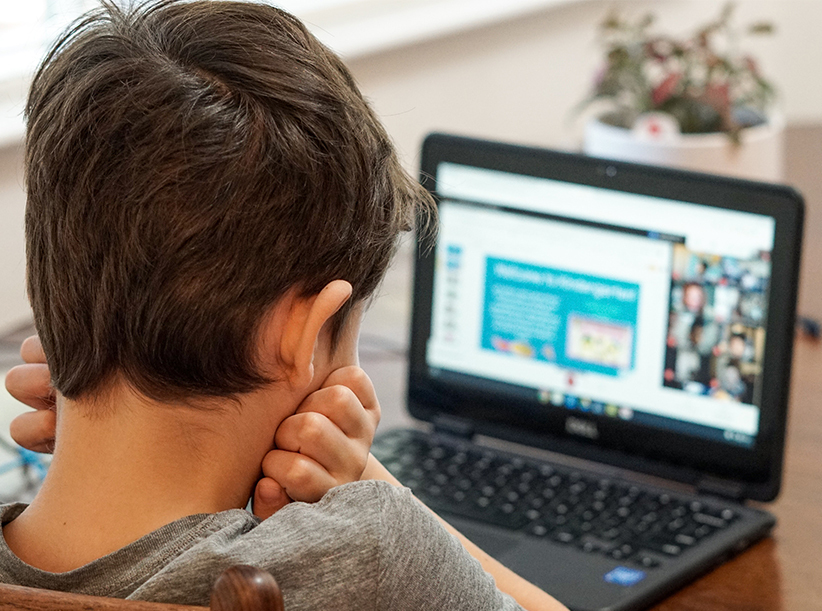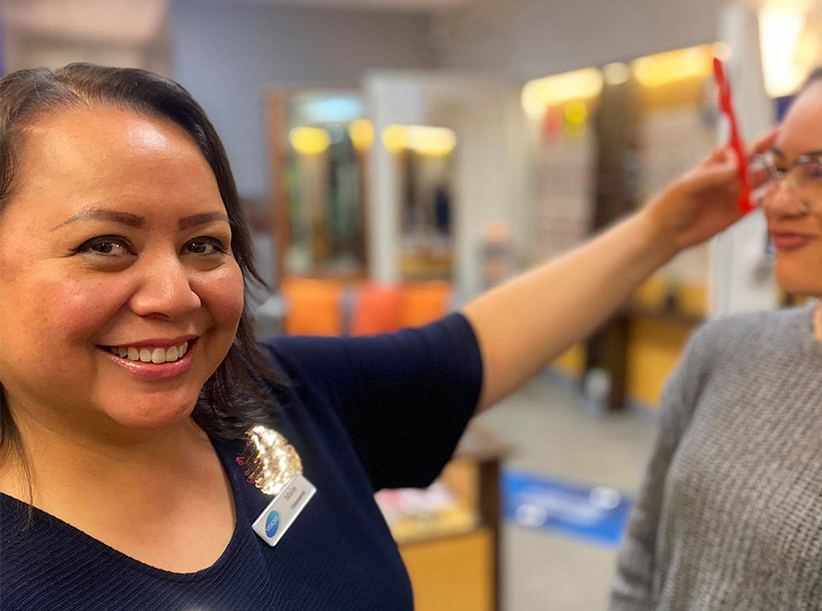The Effects of Screen Time on Kids Eyes

Everywhere we go, we’re faced with screens. From the phones we carry with us daily, to the computers we work from, the average Western person spends around 11 hours per day looking at a screen of some kind. Of greater concern is the fact that we really aren’t sure just how much screen time is affecting us on a daily basis. With technology moving at an unprecedented rate, the science takes longer to catch-up, so just how much screens are impacting our health and wellbeing is still to be understood. While this is the case, there have been startling discoveries on the potential impacts of screen time, with eye health being one of these.
When it comes to children, in early stages of development, there’s an even greater cause for vigilance when it comes to limiting screen exposure. With a number of conditions, from near-sightedness to insomnia attributed to screen-use in young people, it’s important to be aware of how screens affect us negatively. In doing so, we can educate our children on how to avoid these effects while still enjoying the wonderful things these technologies provide.
Read on for a crash course on how you can keep your kids and their vision tech-safe.
Screen Time Habits
Obesity, poor motor skills, hyperactivity and sleep are just some of the problems screen time can cause in young children, according to a recent study by the Ministry of Social Development’s Children and Families Research Fund. These all occur at crucial developmental ages, when kids are still developing physically, mentally and socially. While the government guidelines around the use in pre-school children are clear, with limited use being the best course of action, from the ages of 5 and up (and even younger), technology is now part of a child’s everyday life, and an essential part of schooling and early education. What’s more, with statistics showing children aged 8-18 are using screens for around 8 hours a day, it’s safe to say that screens are here to stay.
But just how do they affect our eyes?
Risks
Computer screens and phones can pose a risk to children’s eyes for a number of reasons, as well as people of all ages. Here we’ll explore a few of the ways screens can impact our vision and how your child can avoid them.
Blue light exposure
Blue light is a wavelength of light emitted by our screens and digital devices. Also emitted by the sun, bluelight is beneficial for raising cortisol and promoting wakefulness in the day time, regulating our circadian rhythm. When we use digital devices closer to bed time however, blue light can inhibit our production of melatonin, making it harder for us to fall asleep. In children, this can have knock-on effects. Less sleep = tiredness throughout the day, less focus and lower energy levels.
Researchers recommend using dim red lights for night lights and avoiding looking at bright screens two-to three hours before bed. Your computer monitor or phone may also have a blue-light filter, which can be switched on while using tech later in the day. Glasses with a blue-light control filter can also be helpful in limiting exposure during the evening.
Myopia
Myopia (or nearsightedness) is a common cause of poor vision and is growing exponentially. Myopia occurs when the eyeball is too long, relative to the lens of the eye. In addition to causing reading difficulties, myopia can cause eye strain, headaches and fatigue.
So what’s the link between screen time and myopia?
While research is still in its infancy, studies suggest a potential link between screen time and myopia, with a study based in Ireland finding 6-7 year olds had a near 4x higher prevalence of myopia if they used screens for 3 hours or more per day. Interestingly, this may be due to limited UV light exposure, as a consequence of using tech inside. Another study showed that each additional hour in the sun per week reduced risk of myopia by about 2%. Much like our parents would have told us with television - kids need to be playing outside!
Dry and Irritated Eyes
Eye irritation will be familiar to anyone who has spent a long day in the office or in-front of a screen. This problem comes from prolonged focus on a screen, usually just a short-distance from our eyes, and additional things like glare. This can compound when taking into account that people focusing on screens blink less, meaning less lubrication, blurred vision and dry eye syndrome.
Limiting use is the best policy once again, but a general rule of thumb is to advise kids to implement the 20/20/20 rule while using screens for longer periods of time. Every 20 minutes spent using a screen, try to look away at something that is 20 feet (6 meters) away from you for a total of 20 seconds to rest your eyes. This helps to reduce eye strain, allowing the eyes to readjust, giving them a much-needed break. Eye drops can also be helpful for providing regular lubrication to eyes for screen users.
While screens can be harmful, they also provide a world of good. From interacting with friends, to education, play and discovery, they’re an amazing tool that can enrich children’s lives. By teaching kids early about responsible use, making them aware of how screens work, balancing the good and the bad, we can protect their eye health and development for a lifetime of better vision.
